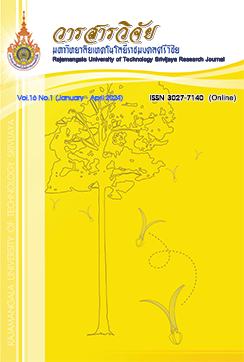Diagnosis of Pneumonia on Chest Radiographs Using Machine Learning
Keywords:
classification, machine learning, pneumonia, chest radiographAbstract
This research proposes a method for diagnosing pneumonia on chest radiographs using a variety of machine learning methods for disease analysis. Most pneumonia is caused by a respiratory infection, such as bacteria or viruses, and pneumonia causes pleurisy, a condition in which fluid fills the lungs, making it difficult to breathe. The researchers developed a computer-aided pneumonia diagnosis system for the automatic diagnosis of pneumonia by designing a data group design and using a machine learning model: support vector machine (SVM), K-Nearest Neighbor (KNN), Artificial Neural Network (ANN), Adaptive Boosting (AdaBoost) and Logistic Regression. By this method, the weight-mass binding technique was adopted by using the values of the assigned weights from learning data, obtained scores, matrix assessment guidelines, precision standard, recall, F1 score, and area under the curve to be generated as weight vectors for learning guidance. Learning groups and test results were based on a series of chest radiographs of the dataset for experimental use. In this test, the 1,340 images of normal lungs and 1,704 images of abnormal lungs were divided into data sets for learning, and another group of images used as test data that consisted of 233 images of normal lungs and 390 images of abnormal lungs. Based on the research, the developed program was able to analyze the test images with speed and the discriminatory accuracy results yielded 94.38 percent and 84.9 percent of both base-learned and non-learned data, respectively.
References
Bradley, J.S., Byington, C.L., Shah, S.S., Alverson, B., Carter, E.R., Harrison, C., Kaplan, S.L., Mace, S.E., McCracken, G.H., Moore, M.R., St Peter, S.D., Stockwell, J.A. and Swanson, J.T. 2011. The management of community-acquired pneumonia in infants and children older than 3 months of age: clinical practice guidelines by the Pediatric Infectious Diseases Society and the Infectious Diseases Society of America. Clinical Infectious Diseases 53: e25-76.
Cherian, T., John, T.J., Simoes, E., Steinhoff, M.C. and John, M. 1988. Evaluation of simple clinical signs for the diagnosis of acute lower respiratory tract infection. The Lancet 332(8603): 125-128.
SChlemper, J., Caballero, J., Hajnal, J.V., Price, A. and Rueckert, D. 2017. A Deep cascade of convolutional neural networks for dynamic MR image reconstruction. IEEE Transactions on Medical Imaging 37: 491-503.
Harari, M., Shann, F., Spooner, V., Meisner, S., Carney, M. and De Campo, J. 1991. Clinical signs of pneumonia in children. The Lancet 338(8772): 928-930.
Harris, M., Clark, J., Coote, N., Fletcher, P., Harnden, A., McKean, M. and Thomson, A. 2011. British Thoracic Society guidelines for the management of community acquired pneumonia in children: update 2011. Thorax 66(Suppl. 2): ii1-23.
Jeelani, H., Martin, J., Vasquez, F., Salerno, M. and Weller, D. 2018. Image quality affects deep learning reconstruction of MRI, pp. 357-360. In 2018 IEEE 15th International Symposium on Biomedical Imaging (ISBI 2018). IEEE, Washington, D.C., United States.
Kermany, D., Zhang, K. and Goldbaum, M. 2018. Labeled Optical Coherence Tomography (OCT) and Chest X-Ray Images for Classification. Physics. Available Source: https://doi:10.17632/rscbjbr9sj.2, January 6, 2018.
Kubat, M. 2015. A Simple Machine-Learning Task, pp. 1-18. In Kubat, M., ed. An Introduction to Machine Learning. Springer, Coral Gable.
Kundu, R., Das, R., Geem, Z.W., Han, G.T. and Sarkar R. 2021. Pneumonia detection in chest X-ray images using an ensemble of deep learning models. PLoS One 16(9): 1-29.
Le, W.T., Maleki, F., Romero, F.P., Forghani, R. and Kadoury, S. 2020. Overview of Machine Learning: Part 2: Deep Learning for Medical Image Analysis. Neuroimaging Clin N Am 30: 417-431.
Metkarunchit, T. and Charoenpojvajana, K. 2020. Detection of COVID-19 using Deep Learning with CT Scan Images. Journal of Engineering and Digital Technology (JEDT) 8(2): 8-17. (in Thai)
Milletari, F., Navab, N. and Ahmadi, S.A. 2016. V-Net: Fully Convolutional Neural Networks for Volumetric Medical Image Segmentation, pp. 565-571. In Proceedings of the 2016 Fourth International Conference on 3D Vision (3DV). California, United States.
Ministry of Public Health of Thailand. 2019. Pneumonia in Thailand report 2019. Available Source: http://www.boe.moph.go.th/boedb/surdata/506wk/y62/d31_5362.pdf, February 1, 2022. (in Thai)
Ministry of Public Health of Thailand. 2020. Pneumonia in Thailand report 2020. Available Source: http://www.boe.moph.go.th/boedb/surdata/506wk/y63/d31_5263.pdf, February 1, 2022. (in Thai)
Noisiri, W., Vijitrsaguan, C., Lertrojpanya, S., Jiamjit, K., Chayjaroon, J. and Tantibundhit, C. 2022. Sensitivity and Specificity of Artificial Intelligence for Chest Diagnostic Radiology. Journal of the Department of Medical Services 45(4): 55-61.
Rajpurkar, P., Irvin, J., Zhu, K., Yang, B., Mehta, H., Duan, T., Ding, D., Bagul, A., Langlotz, C., Shpanskaya, K., Lungren, M.P. and Ng, A.Y. 2017. Chexnet: Radiologist-level pneumonia detection on chest x-rays with deep learning. arXiv. Available Source: https://doi.org/10.48550/arXiv.1711.05225,September 1, 2022.
Ronneberger, O., Fischer, P. and Brox, T. 2015. U-net: Convolutional networks for biomedical image segmentation, pp. 234-241. In Medical Image Computing and Computer-Assisted Intervention-MICCAI 2015. Munich, Germany.
Saengkaew, P., Lohvithee, M. and Sanghangthum, T. 2021. Computed Tomography for the Diagnosis of COVID-19. Thai Journal of Physics 37(2): 45-59.
Sanguansat, P. 2019. Artificial Intelligence with Machine Learning, AI Built with Machine Learning. IDC Premier, Nonthaburi. (in Thai)
Saraubon, K. 2020. Learning Data Science and AI: Machine Learning with Python. Media Network, Bangkok. (in Thai)
Smyth, A., Carty, H. and Hart, C.A. 1998. Clinical predictors of hypoxaemia in children with pneumonia. Annals of Tropical Paediatrics 18(1): 31-40.
Srikaew, A. 2009. Research Report on Computational Intelligence. Teaching Publications Electrical Engineering. Suranaree University of Technology, Nakhon Ratchasima. (in Thai)
World Health Organization. 2021. Pneumonia statistics worldwide 2021. Available Source: https://www.who.int/news-room/fact-sheets/detail/pneumonia, February 1, 2022.
Zhang, D., Ren, F., Li, Y., Na, L. and Ma, Y. 2021. Pneumonia Detection from Chest X-ray Images Based on Convolutional Neural Network. Electronics 10(3): 1512.
Downloads
Published
How to Cite
Issue
Section
License
Copyright (c) 2024 Rajamangala University of Technology Srivijaya Research Journal

This work is licensed under a Creative Commons Attribution-NonCommercial-NoDerivatives 4.0 International License.
The content and information in the article published in Journal of Rajamangala University of Technology Srivijaya It is the opinion and responsibility of the author of the article. The editorial journals do not need to agree. Or share any responsibility.







